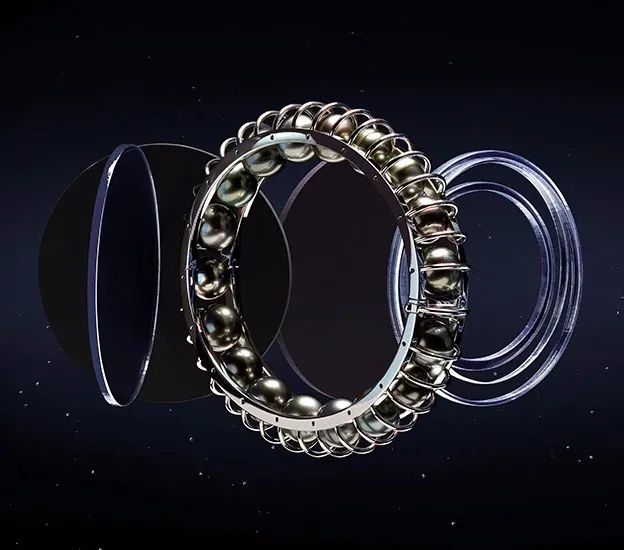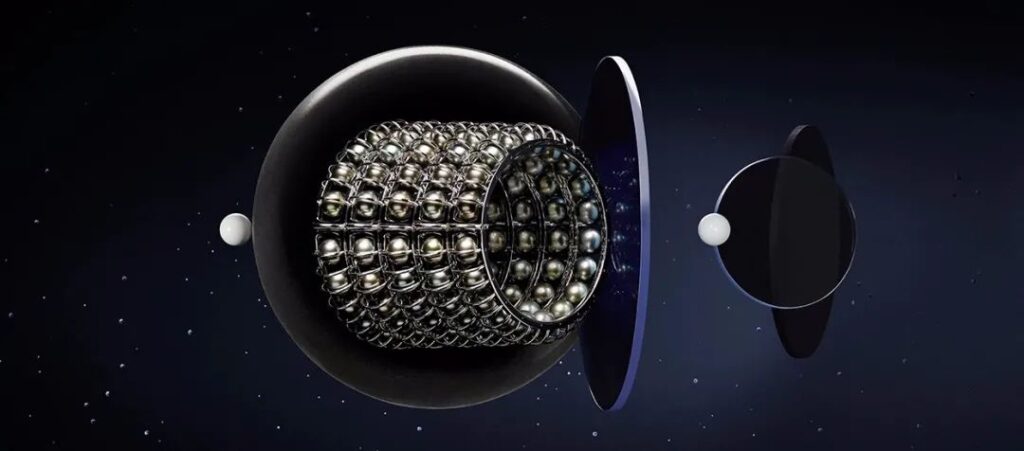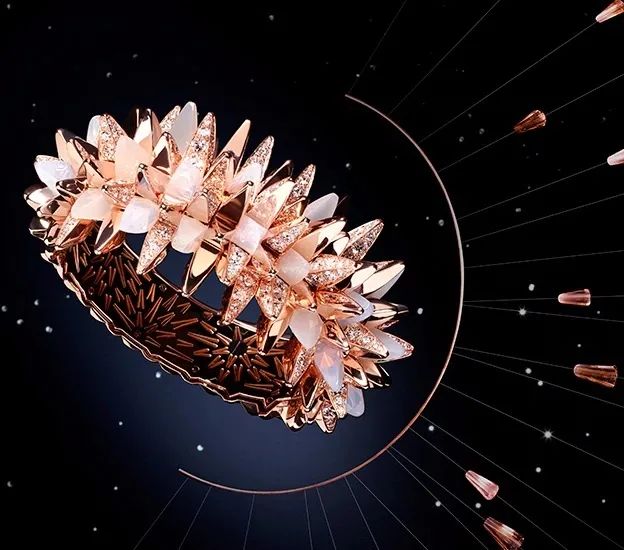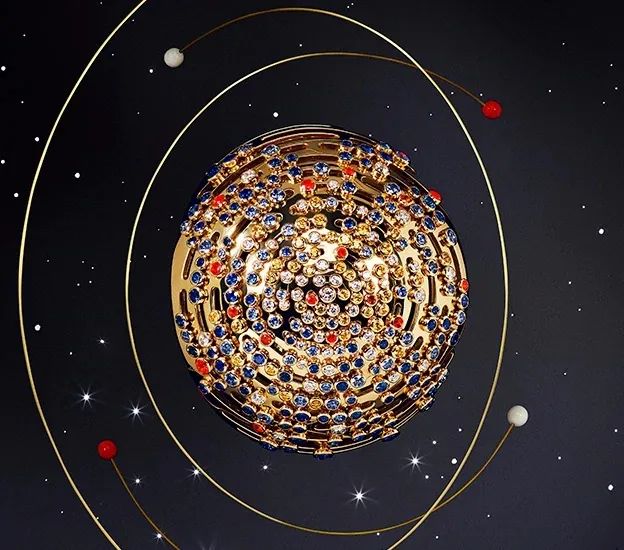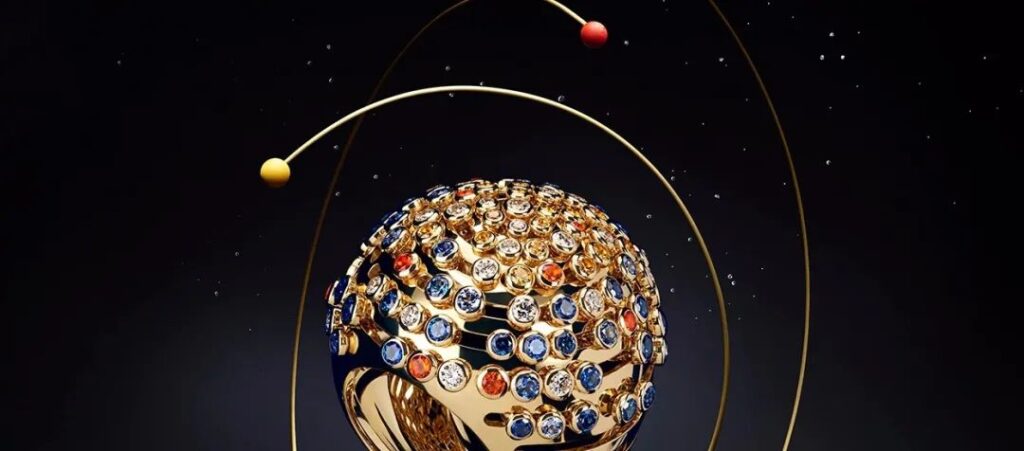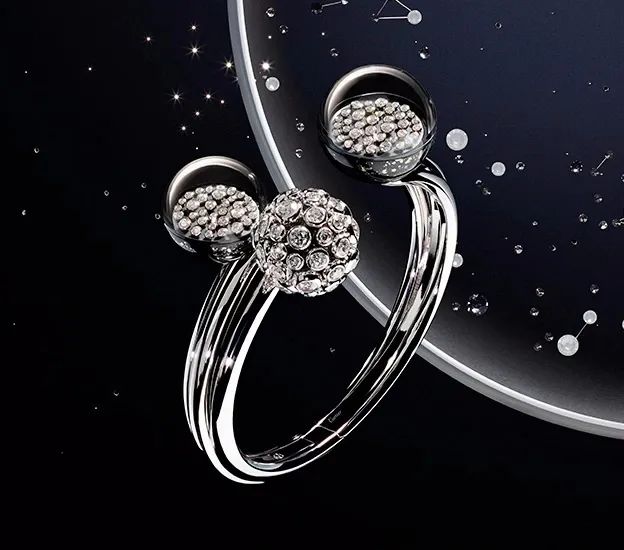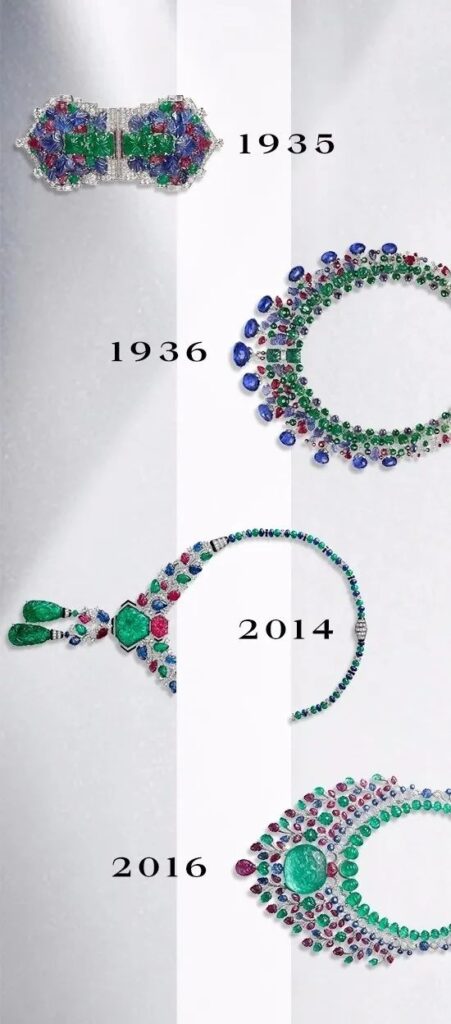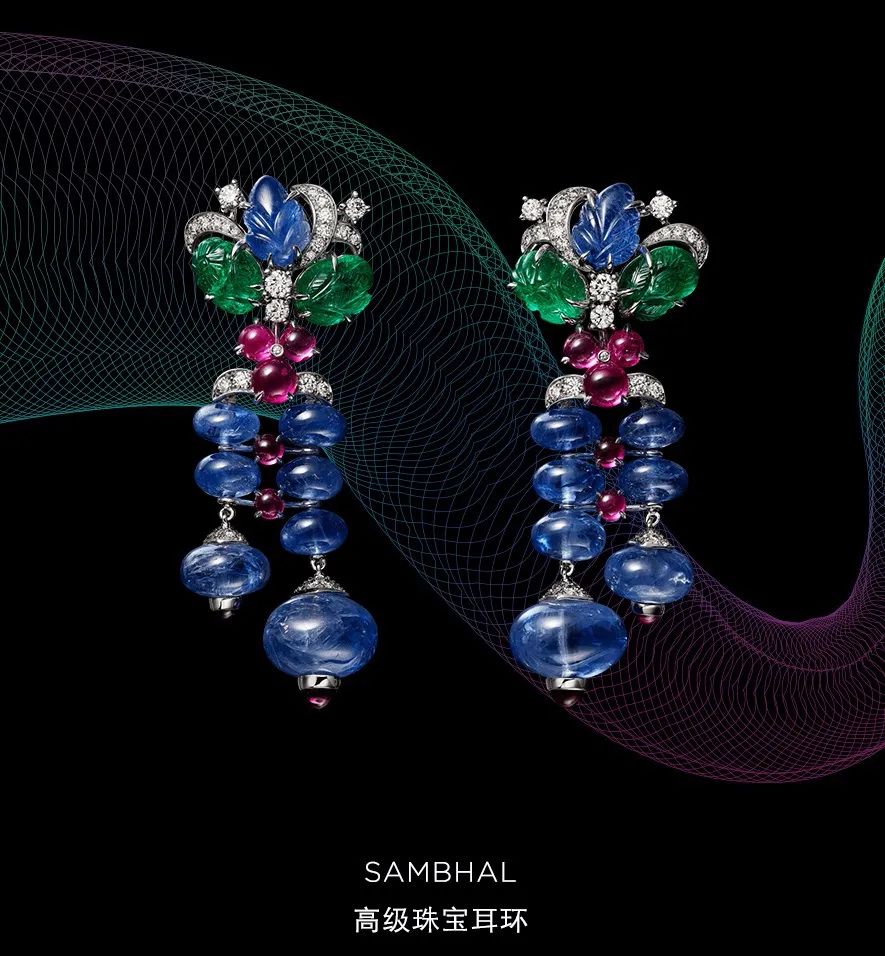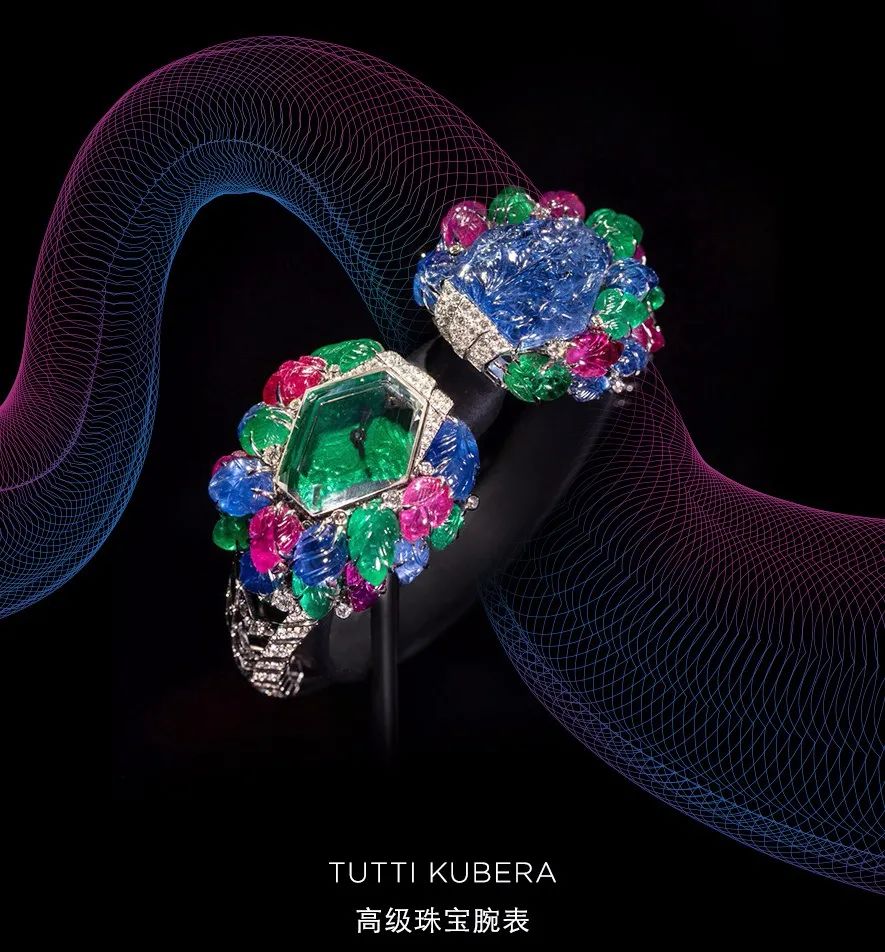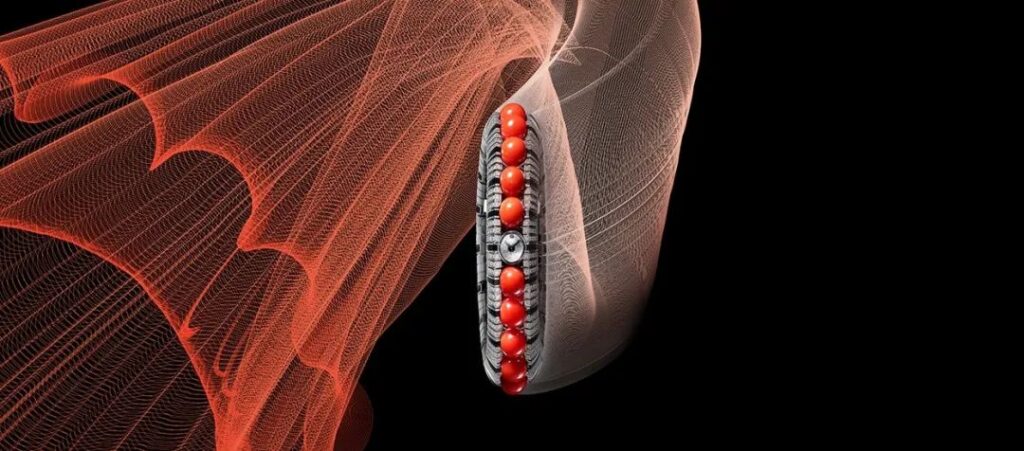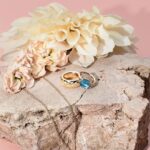
When it comes to international luxury jewelry brands, iconic pieces like the “four-leaf clover,” “nail ring,” and “keys pendant” are considered entry-level basics, despite their high brand recognition.
The truly wealthy focus on these brands’ high jewelry collections, as these pieces represent the pinnacle of design, craftsmanship, and rare gem collections.
Today, let’s explore the “master jeweler” of the industry: Cartier’s high jewelry collections.
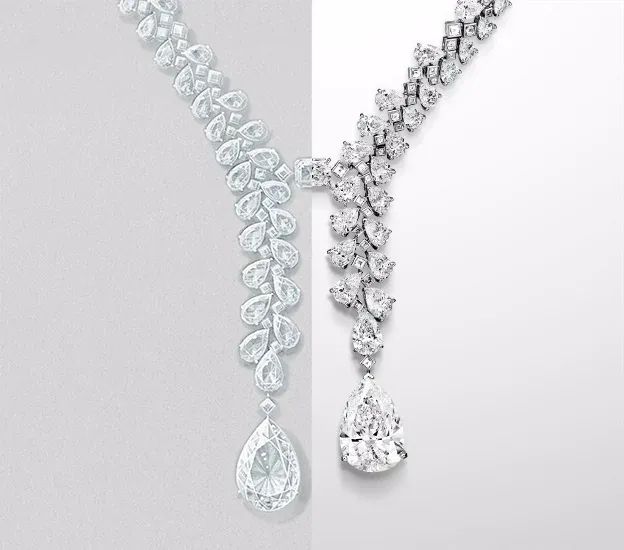
Cartier’s Brand Story
In 1847, Louis-François Cartier founded the brand in Paris, France. Throughout Cartier’s development, it has maintained close connections with royal families, nobles, and social elites worldwide, earning the reputation of “Jeweler of Kings, King of Jewelers.”

01
Magnitude
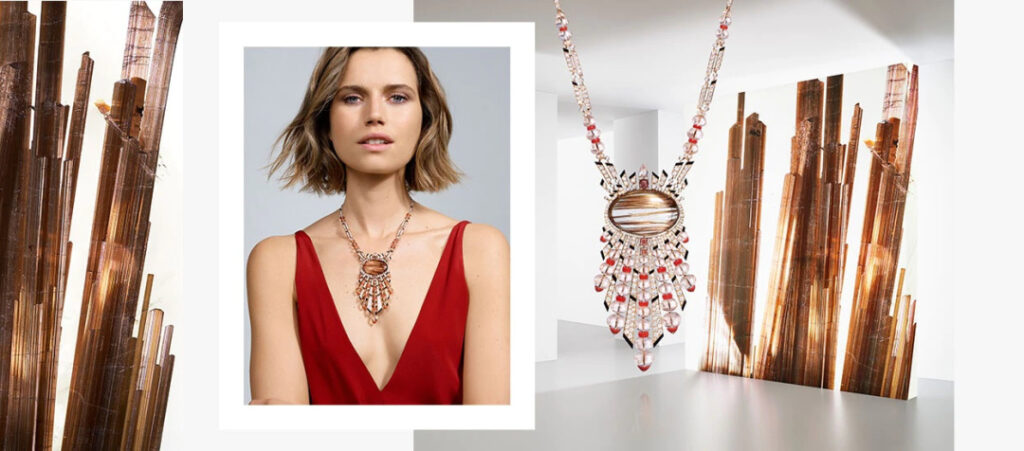
Exploring the Origins of the World
The collision of materials and contrasts: the combination of precious gems and ornamental stones gives birth to spectacular creations. A pioneering approach in high jewelry, a style characteristic full of personality, balancing technical and creative genius, has been repeatedly renewed by Cartier since the early 20th century.
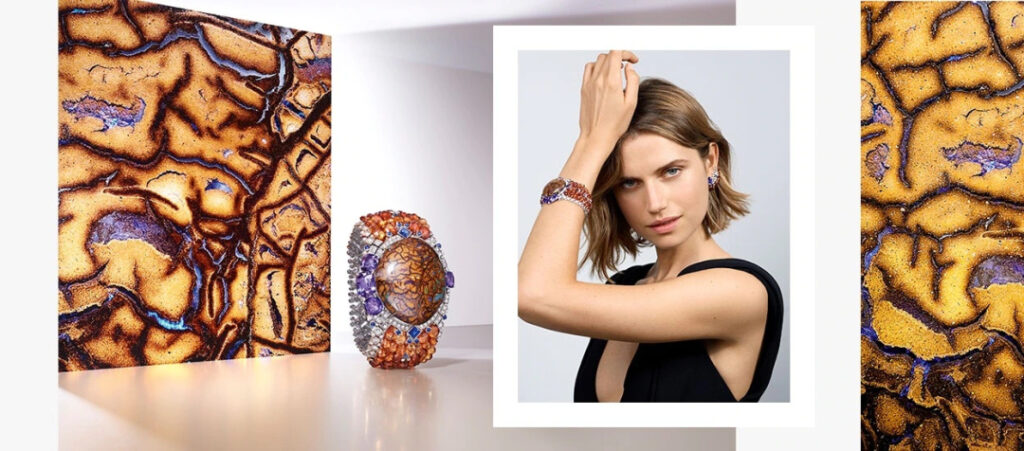

The Art of Subtraction
Liberating high jewelry from metal to showcase the beauty of gemstones themselves. Creating lightweight structures that allow gems to caress the skin. An art of subtraction that relies on craft expertise: each element is designed for and adapted to the body. Movement and mobility are prerequisites for every Cartier creation.
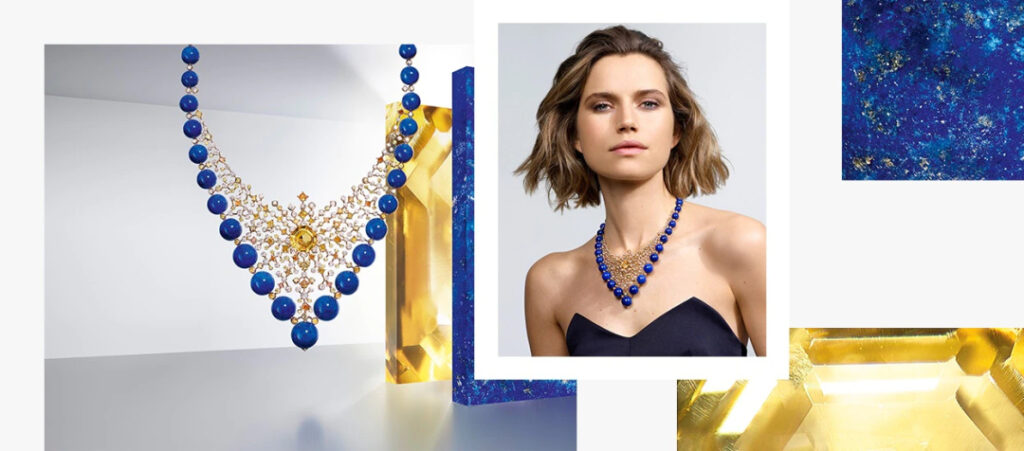
Dialogue Between Stones
In this collection, diamonds make quartz sparkle, sapphires glow alongside opals, and emeralds shine next to crystals. In the collision of opaque and transparent, minerals and precious gems, solid colors and brilliance, earth and light, the stones converse side by side.
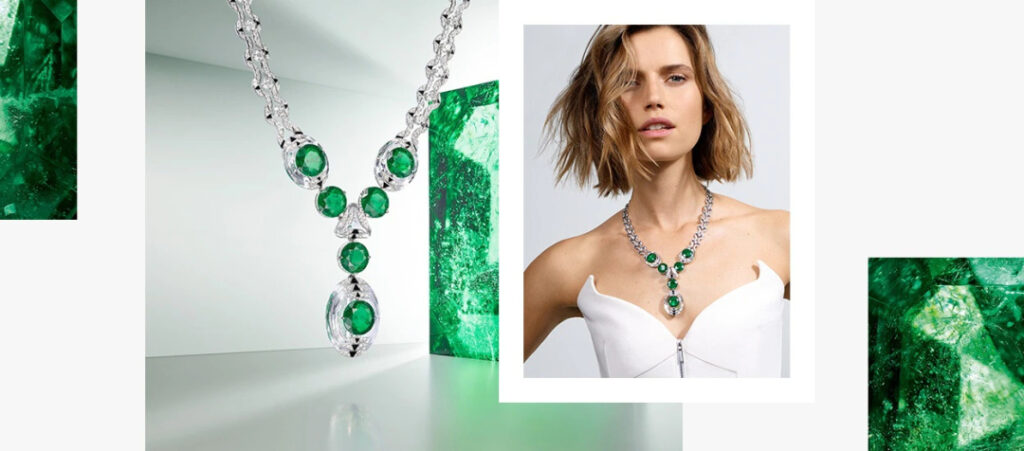
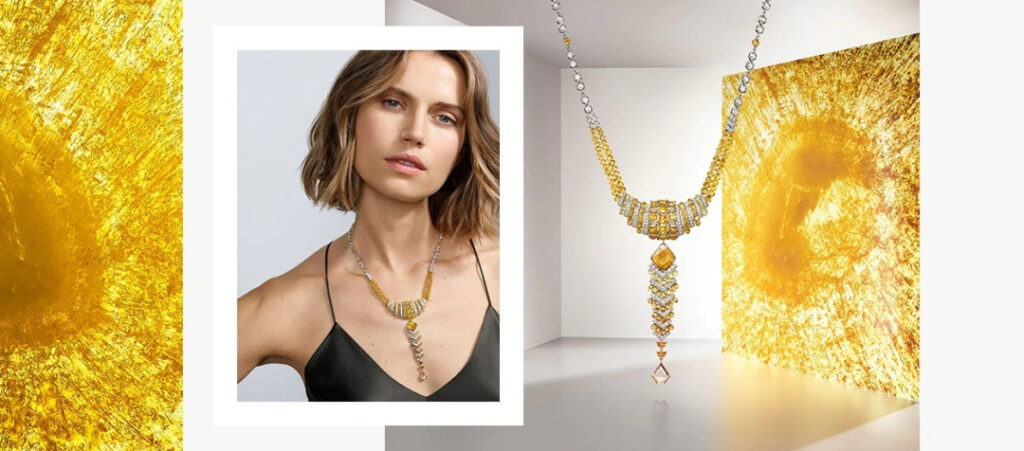
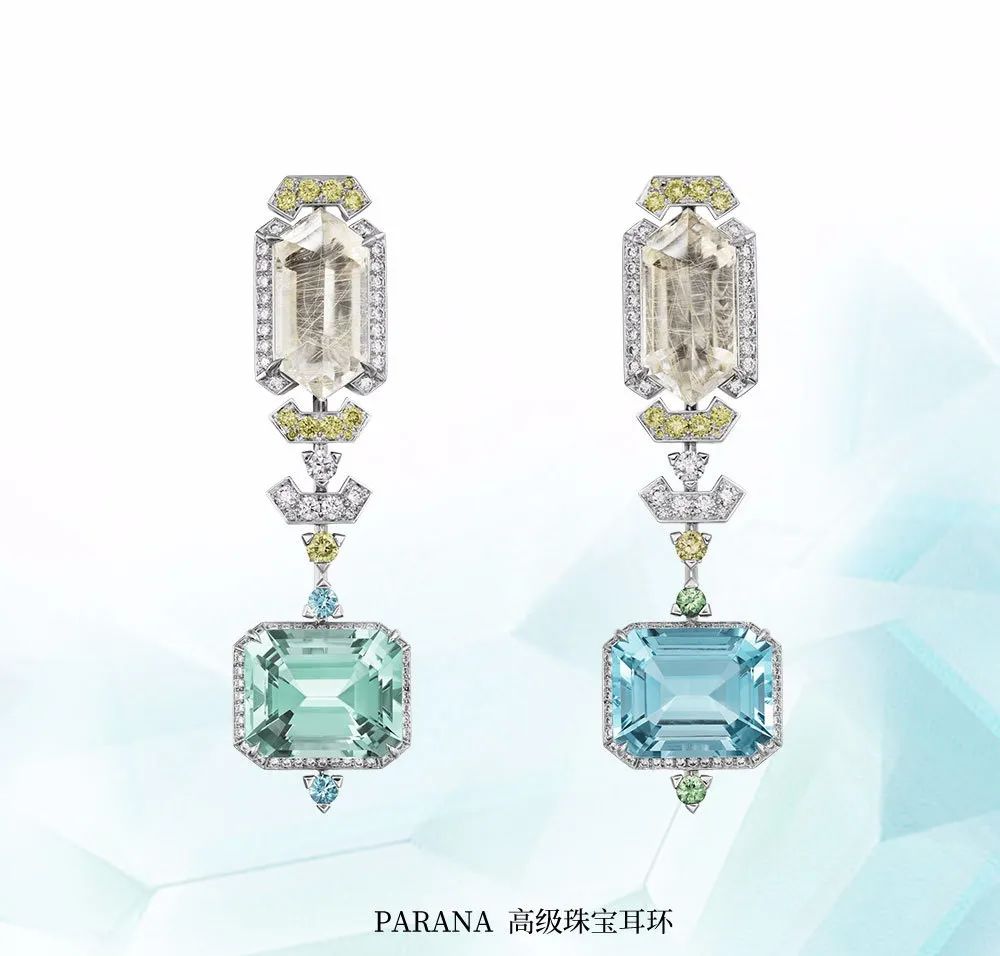
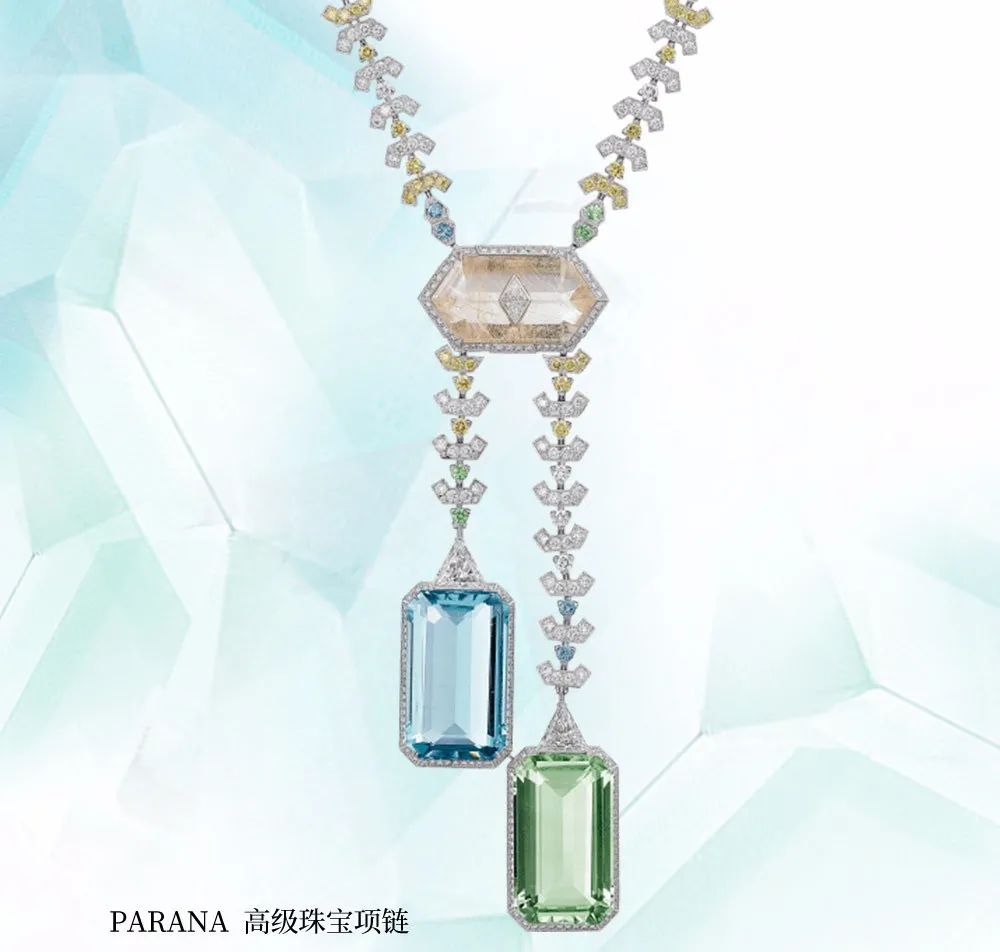
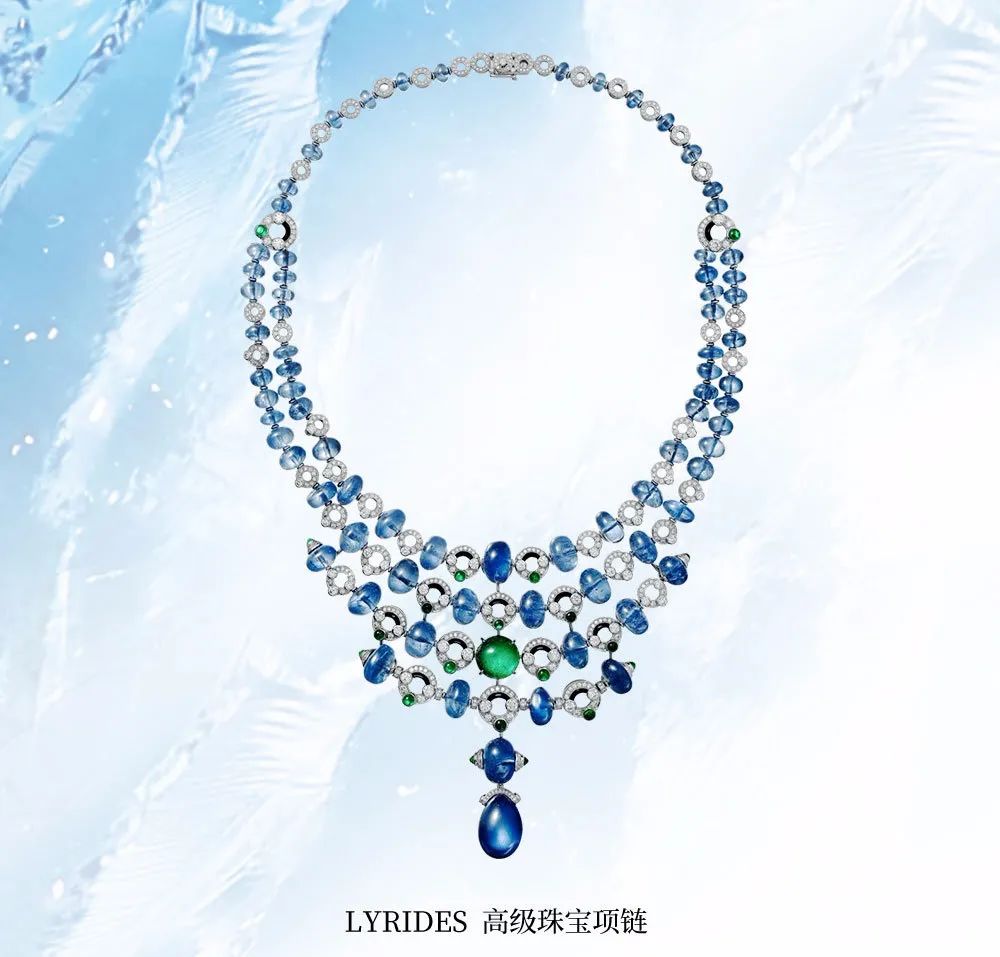
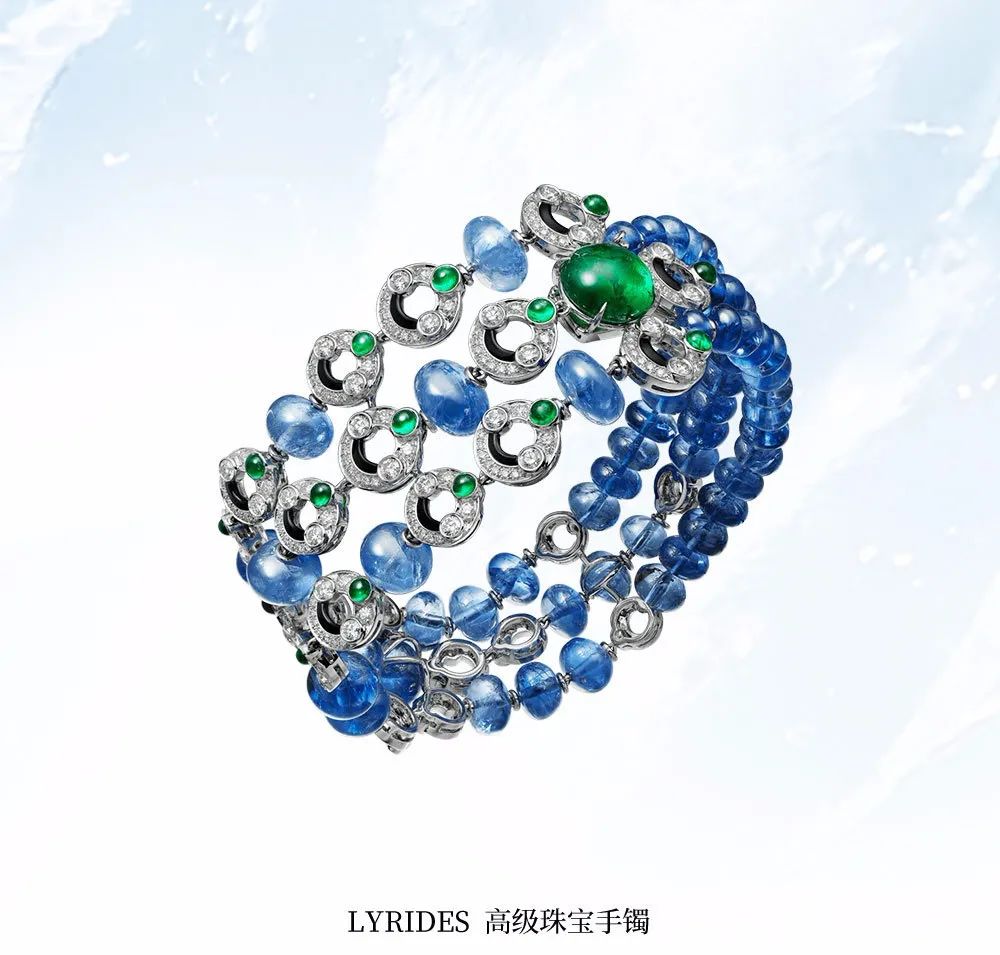
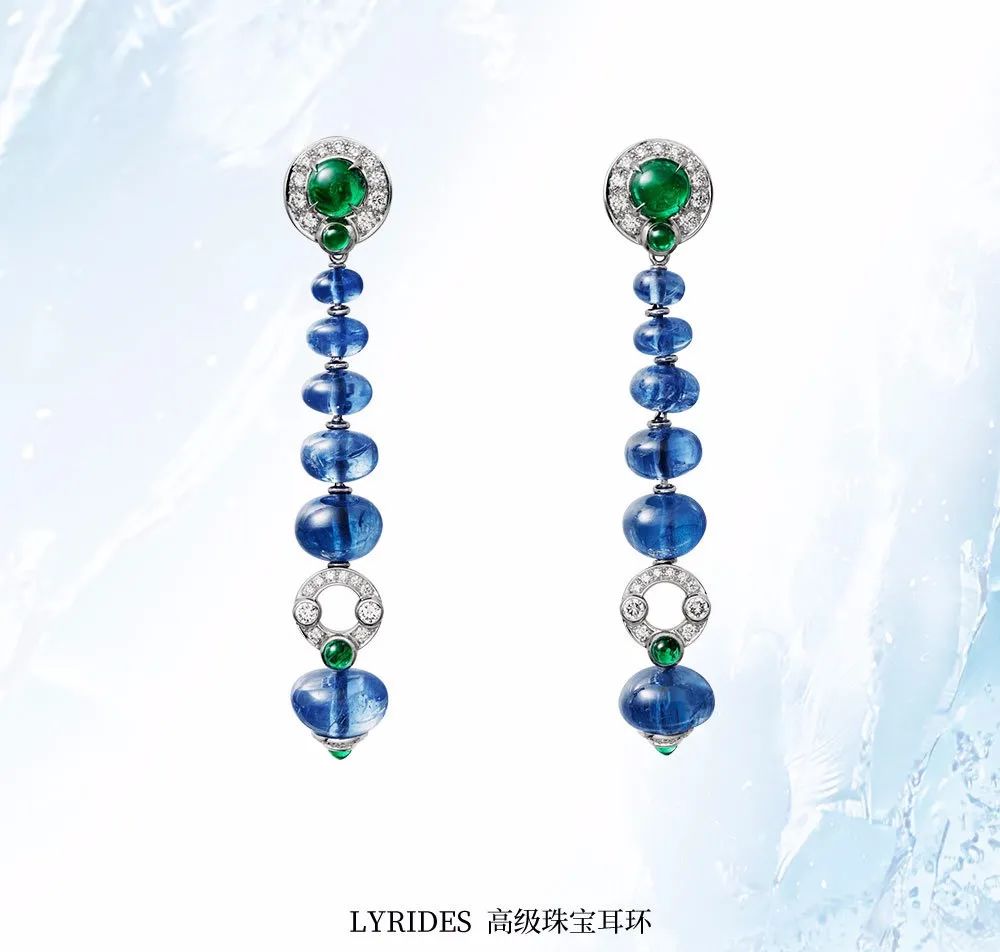
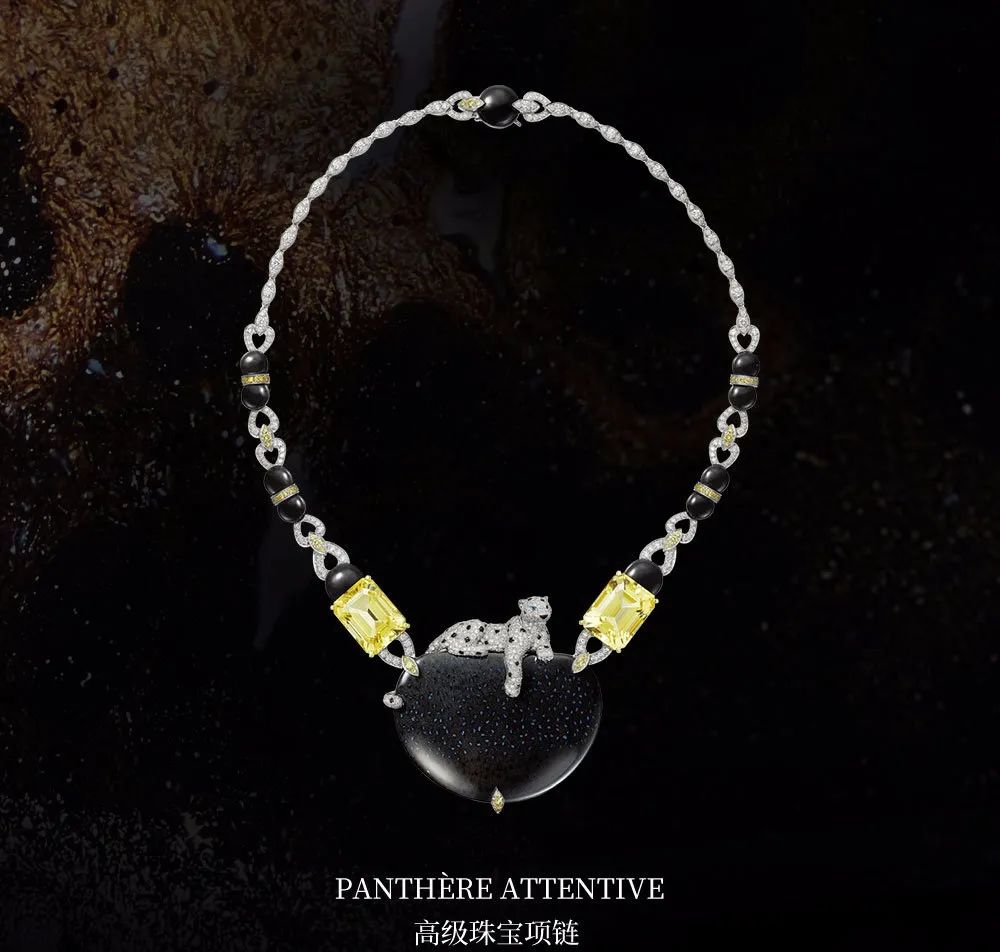
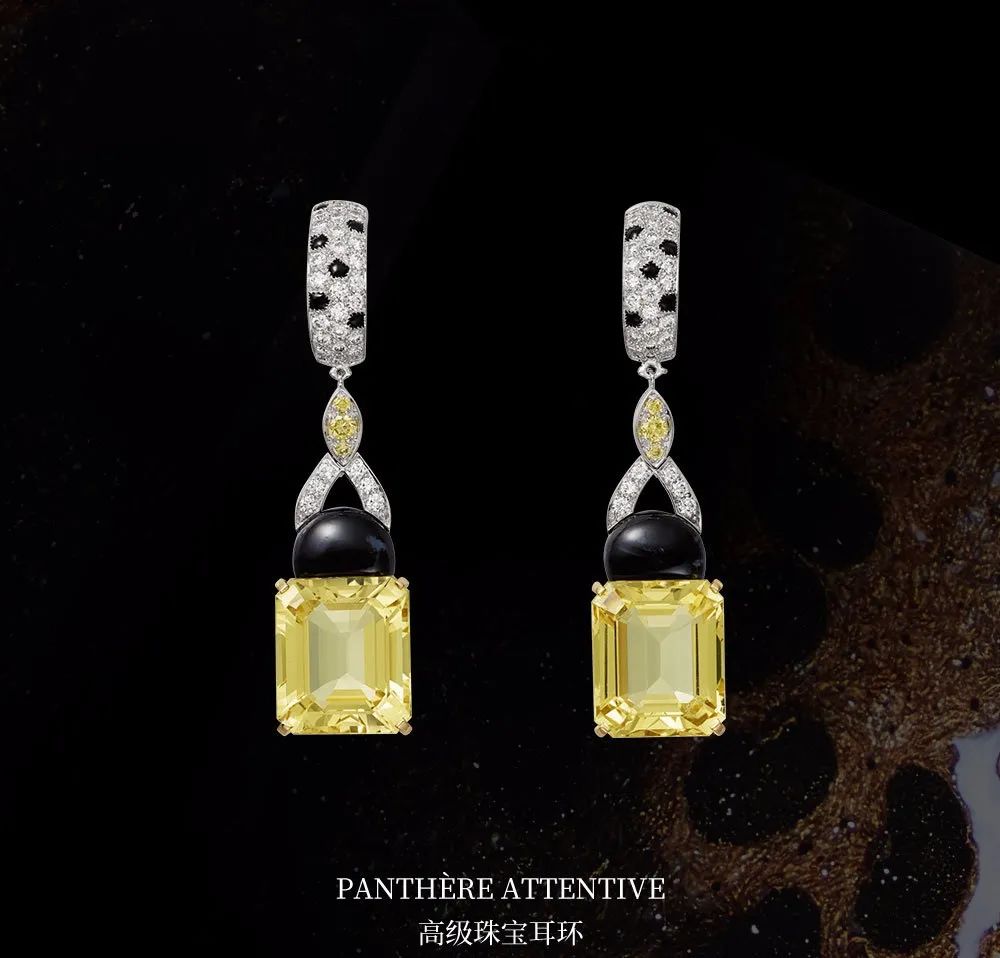
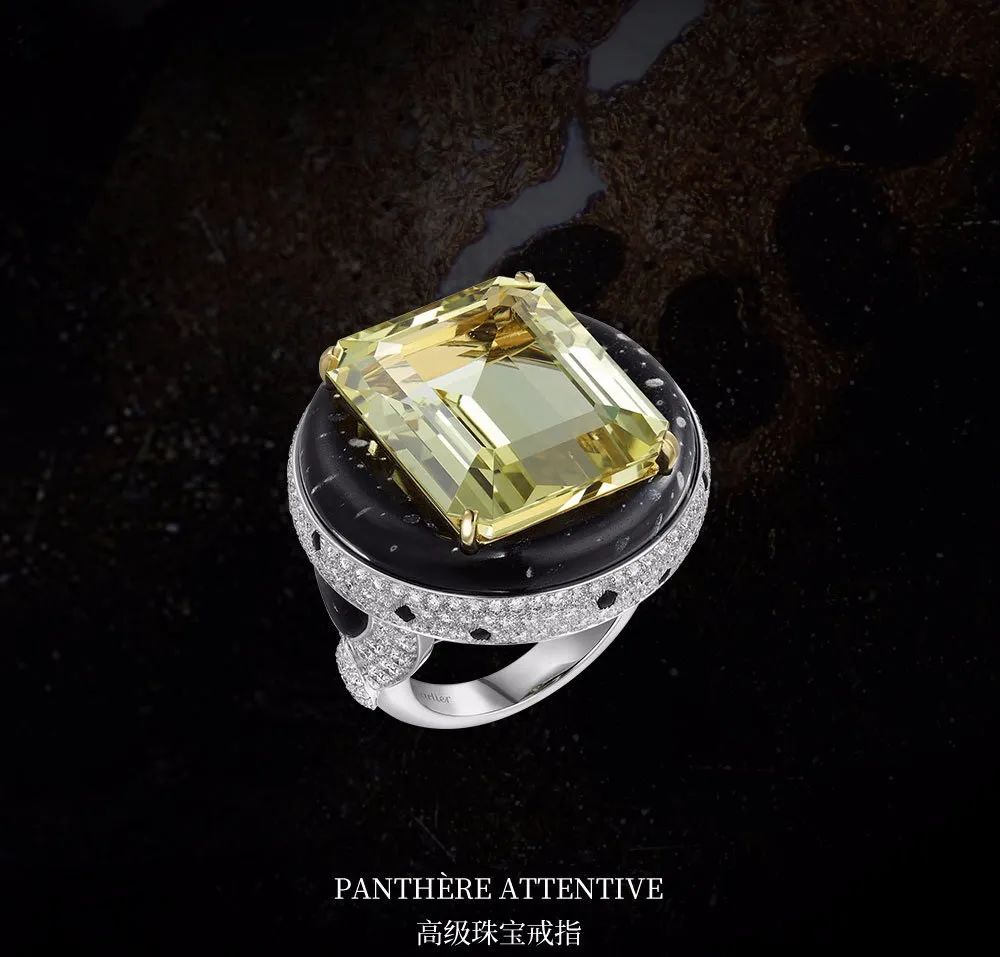
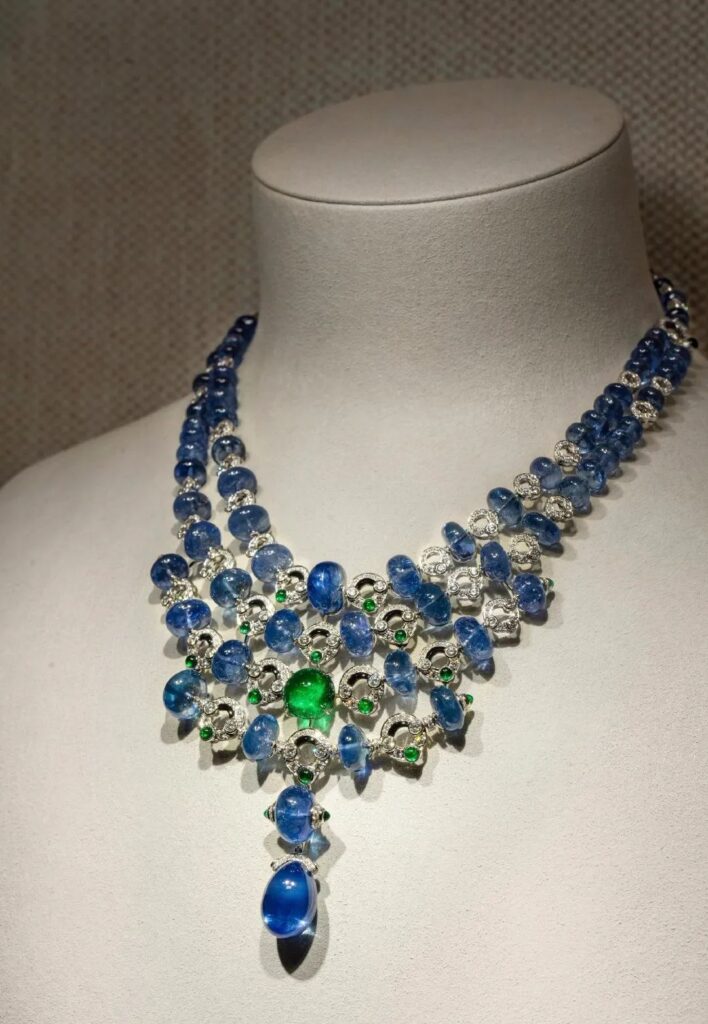
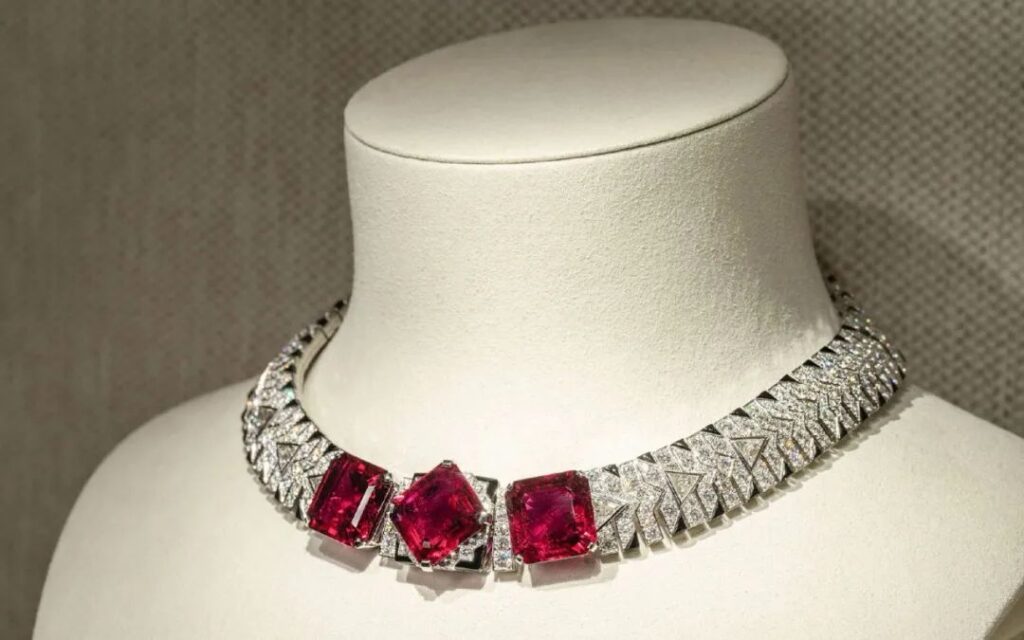
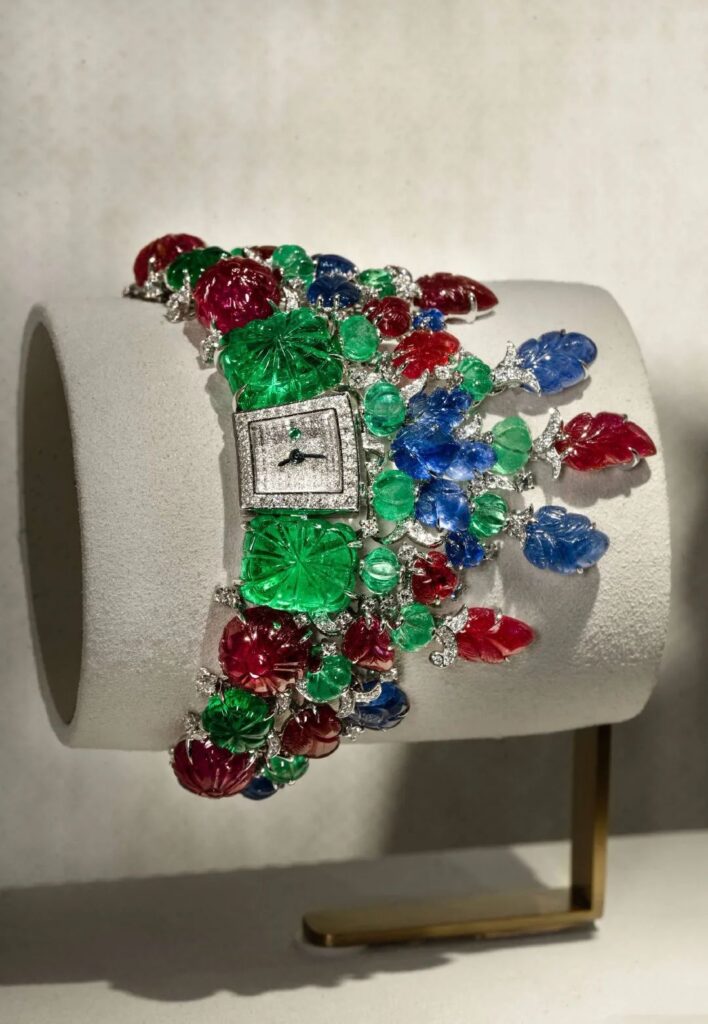
02
Panthère de Cartier

Panthère de Cartier is an icon: recreating inspiration over time through graphic, sculptural, naturalistic, and abstract creations.
The Abstract Panther, Evolution of a Theme
Since its first appearance on a watch with panther spots in 1914, the iconic panther has embodied Cartier’s creations. This original, bold, and elegant jewelry motif has become a signature style. Cartier brings the animal’s nature to life through its representation of the fur in metal and gems. It’s all about the balance between black and white, the alternation between diamonds and onyx.

The Naturalist Panther: A Sculptural Approach
Jeanne Toussaint, Cartier’s bold and visionary creative director from 1933 to 1970, brought the panther to life in 3D brooches in 1949. Since then, the panther has run through the brand’s entire history.
Cartier observes the feline in different stages – waiting, as a fierce predator, or at rest – focusing on its real-life states to elevate its wild and dominant nature.

The Graphic Panther, A Design Vision
Geometry is part of Cartier’s stylistic vocabulary. Applied to the panther, it reveals all its graphic tension. Like an architect, the goal is to showcase the panther’s structure through a modern vision and fashionable volumes. Once again, function, ergonomics, and real life are incorporated into the project.

Panther Savoir-Faire, A Creative and Technical Alliance
From design to stone setting and mounting, each stage is dedicated to the same goal of bringing life to the feline. The idea is not only to imitate nature but to pay homage to it by breathing life into the animal’s personality.
The panther’s sense of vitality results from close collaboration between the creative studio and the workshop. Their constant exchanges run throughout the entire production process. Together, they challenge the concepts of movement, beauty, inversion, position, ergonomics, volume, design, realism, and elegance.
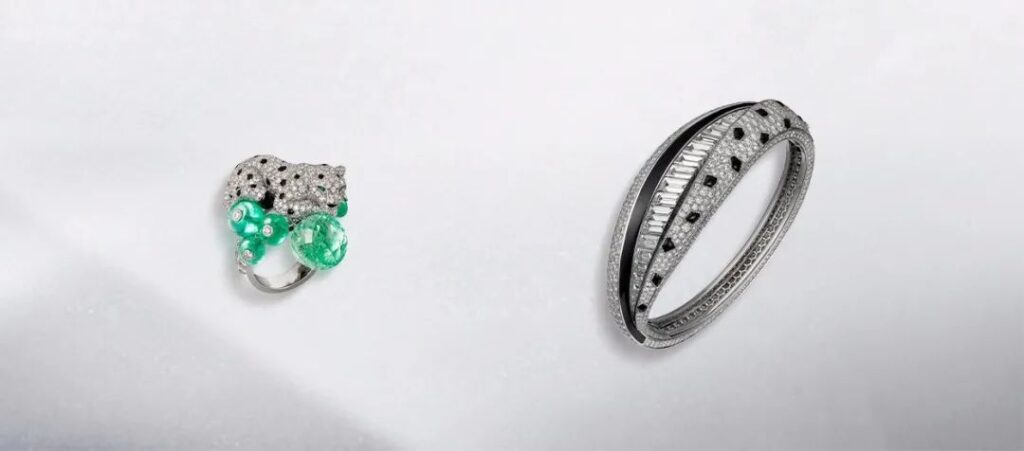
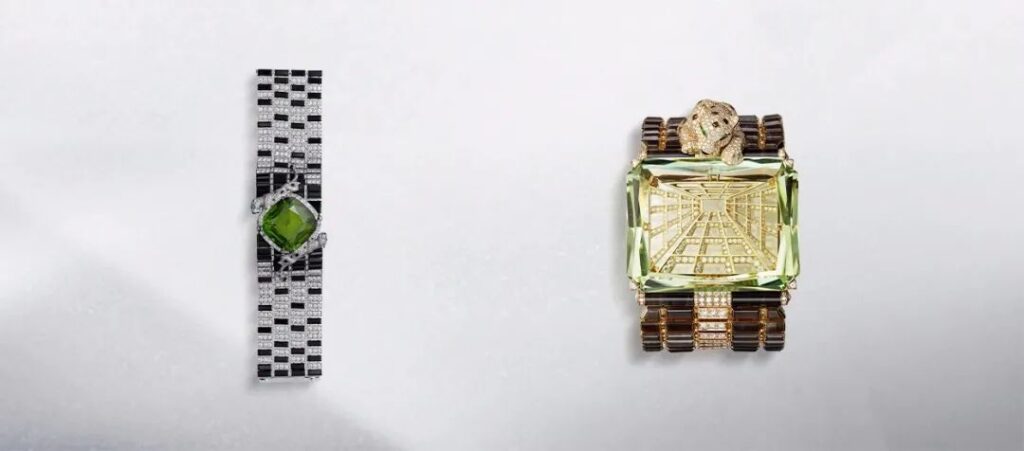
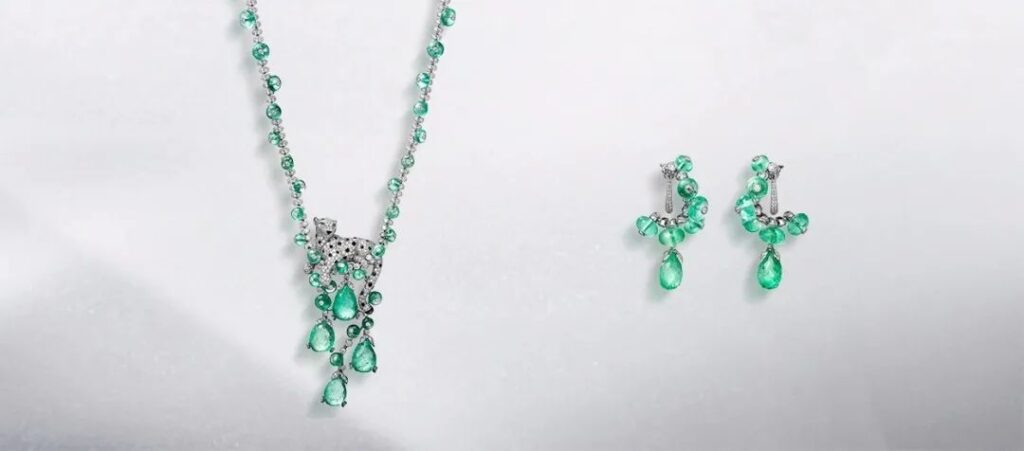
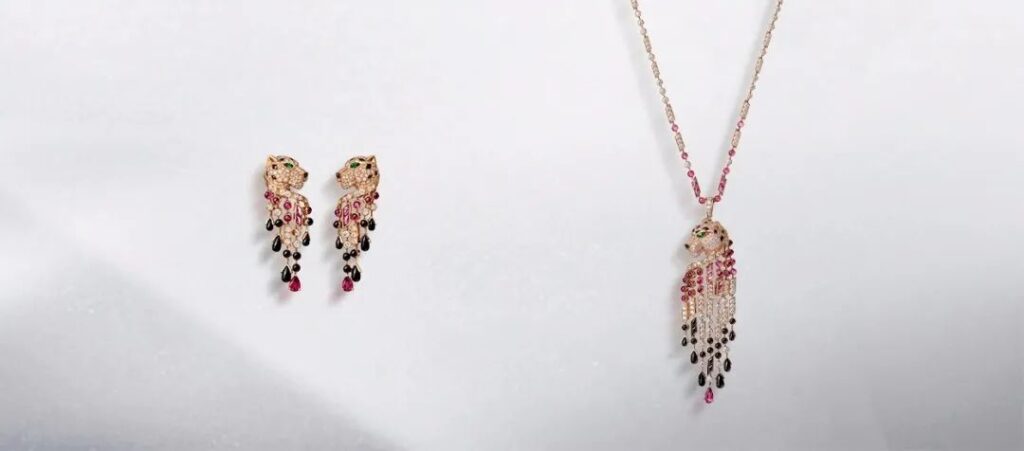
THE PANTHÈRE ALPHABET
From Avant-garde to Zoo de Vincennes, Cartier showcases the entire world of its iconic animal.
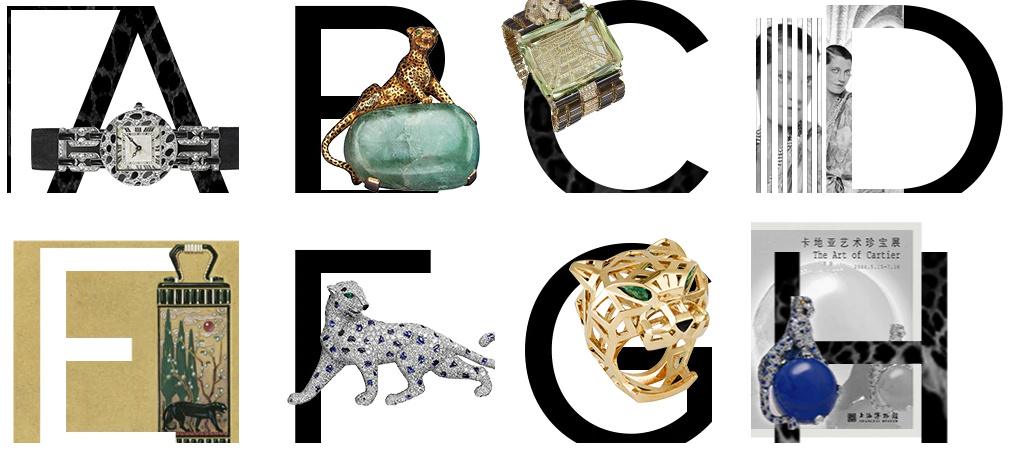

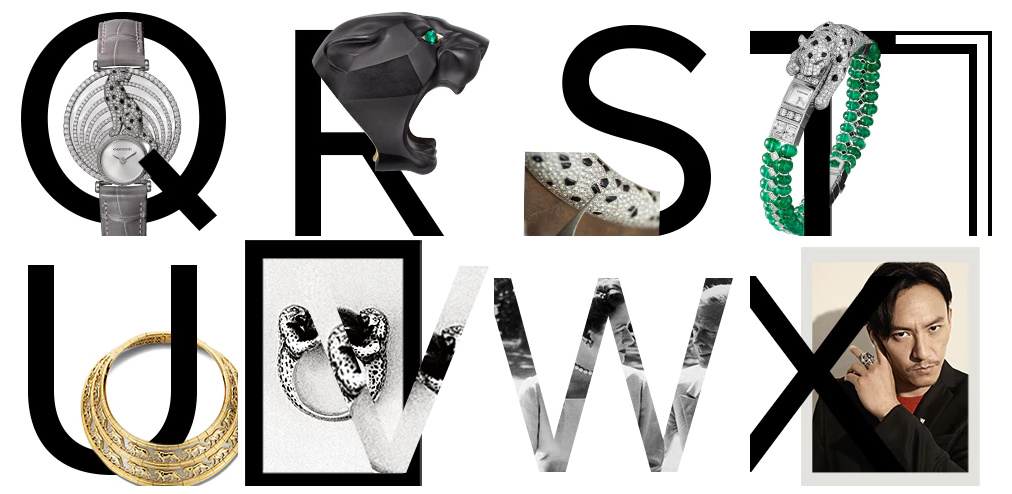

03
Les Galaxies de Cartier

Cartier ventures into unknown territories with its new limited-edition jewelry collection, Les Galaxies de Cartier. Inspired by the cosmos and challenging jewelry conventions with new materials, experimenting with weightlessness and gravity, Cartier explores where reality and fantasy meet beyond the stars.
The collection maps astrological phenomena, aligning planets to unite the sun, moon, Mercury, Venus, Jupiter, and Saturn. Each design represents a universe in itself, with colors that shift and shimmer in bronze, green, and radiant rainbow hues.
Tahitian pearls are sent into orbit with two sculptural white gold cage bracelets, each rotating like planets high in the sky.
Our world is shaped by meteorites and asteroids, stardust composed of rock fragments crystallized over millions of years. The Maison enters a galaxy that spans the universe, where comets fly infinitely.
Rose gold, diamonds, moonstone, and milky quartz form an untamed network of square cones that endlessly refract light between them.
Like Earth seen from high above at night, millions of red, yellow, and blue lights form a vibrant urban canvas. A cluster of glittering gems – yellow and blue sapphires, fiery opals, and diamonds – are free to radiate across the sphere’s surface with your every movement.
The Milky Way is housed within an immense silver disc, its solar systems and black holes floating under the influence of gravity. Using a technique developed by the brand’s master jewelers, diamonds are set using “tremblant setting” or micro-paved setting.
Their star-like brilliance is encased beneath a dome of rock crystal and a base of quartzite, used for the first time in Cartier jewelry.
04
Tutti Frutti

Sapphires, rubies, and carved emeralds – Tutti Frutti pieces are emblematic of Cartier style, an inspiration more vibrant than ever. It continues to explore the interplay of stones, volumes, and sculpture in each dazzling design, resulting from the meeting of creativity and jewelry craftsmanship.
Origins and Influences
In 1911, Jacques Cartier first traveled to India and discovered the technique of carved stones. Over the next decade, the brand created its own carved gems inspired by plants. Initially described as “foliage” in Cartier’s registers, this creative type adopted the name Tutti Frutti in the 1970s and was trademarked by the brand in 1989. Today, it has become one of Cartier’s signature styles.
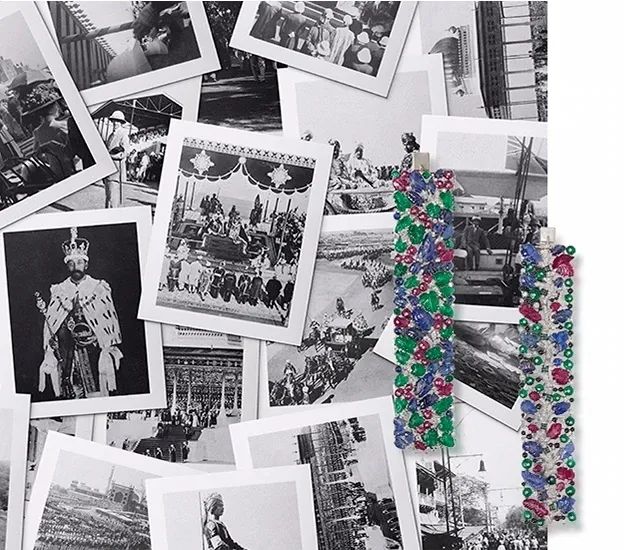
Carved Stones
Emeralds, rubies, and sapphires, carved into the shapes of leaves, flowers, or berries, or cut into grooved beads. These stones, symbols of traditional Indian jewelry, inspired Cartier through unprecedented color combinations.
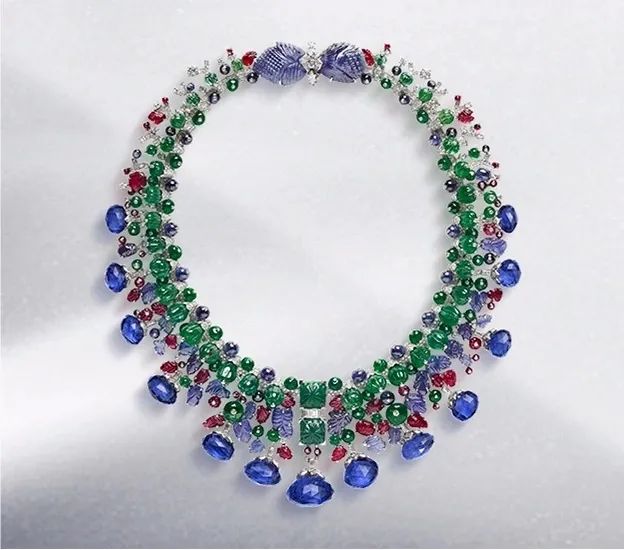
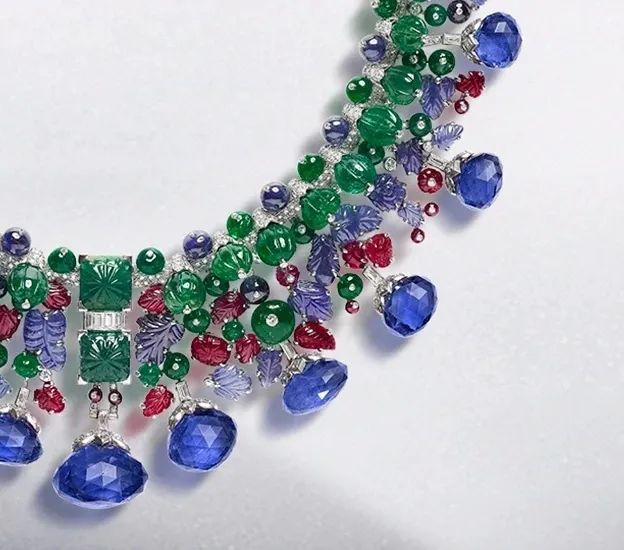
The TUTTI FRUTTI Commission
The desire for this unique jewelry spread worldwide, attracting sophisticated clients who appreciated fashion and art, including Lady Mountbatten (1901-1960) and Daisy Fellowes (1890-1962), considered among the world’s most elegant women.
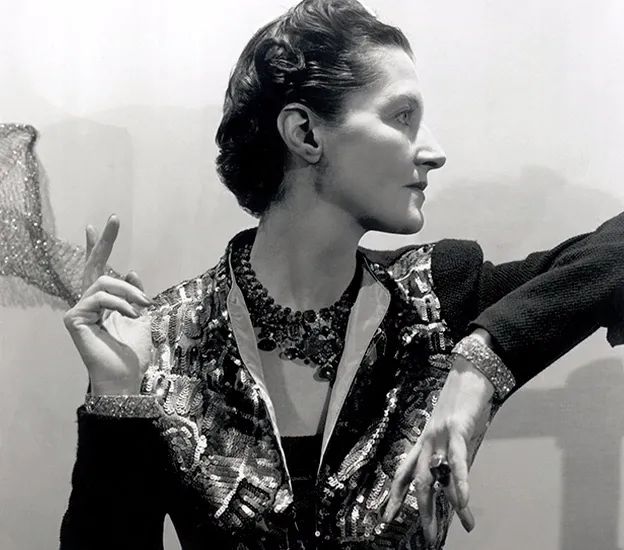
Cartier’s Savoir-Faire: Constantly Evolving
For Tutti Frutti creations, the journey from sketch to realized object represents the first challenge. This phase involves many unknowns, requiring subtle adjustments and sometimes even reconceptualization. Another unique challenge with Tutti Frutti is that the carved stones must never overlap.
Jewelers design and create exquisite, custom-made, invisible, and lightweight armatures, fixed like metal lace on the back of necklaces. For adjustable pieces, modularity requires the use of ingenious structures that are completely undetectable. Cartier’s savoir-faire results from constant exchanges between designers, jewelers, and engineers. It develops through unexpected encounters and thrives through an evolutionary process.

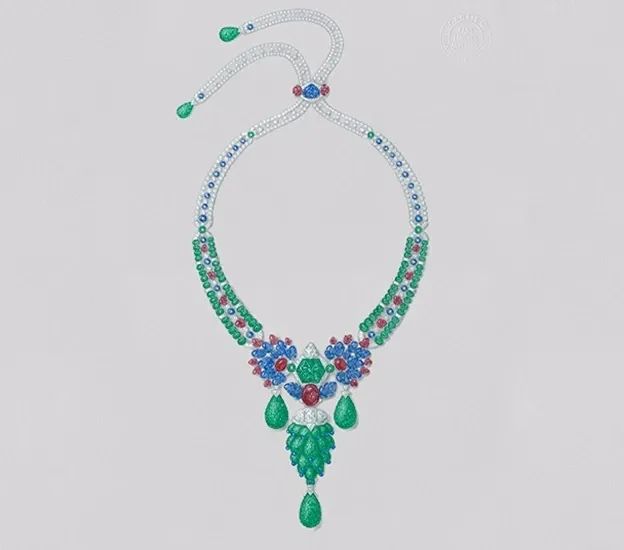
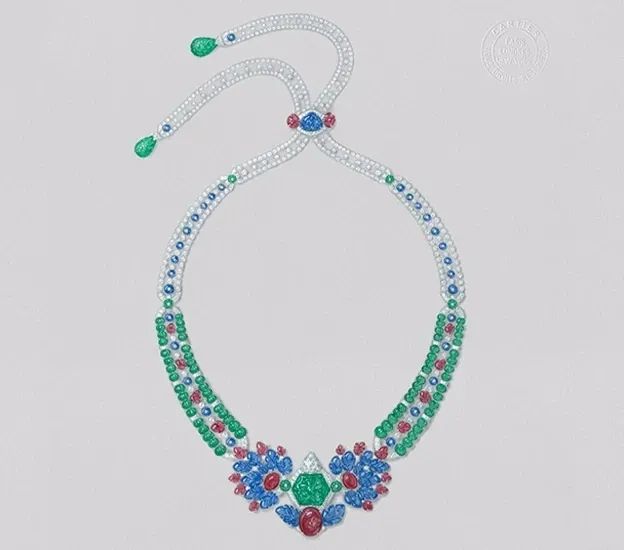
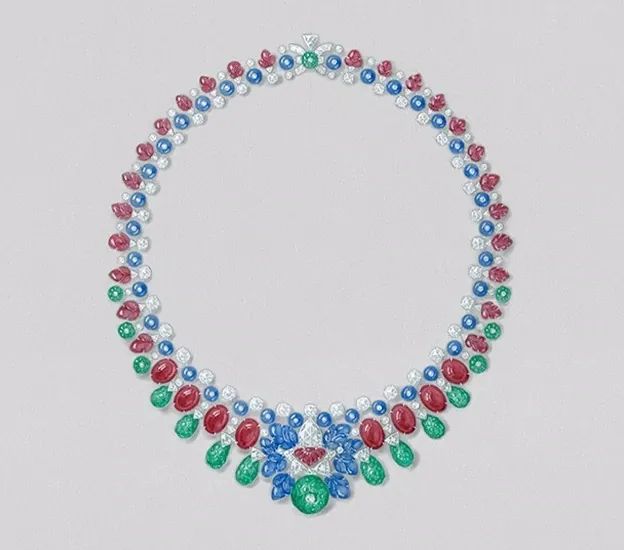
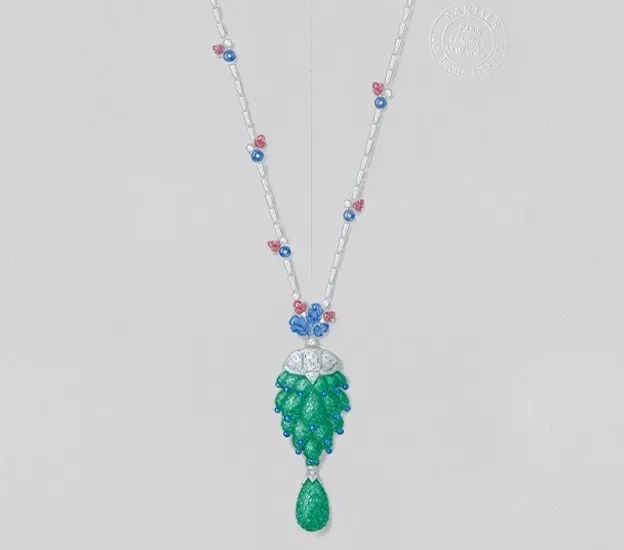
From the 1920s to the present day, explore the Tutti Frutti style through eight iconic pieces.
Style Appreciation section
05
GEOMETRY & CONTRAST

Less is more. In the early 20th century, while Cartier’s neo-classical garland style was flourishing, Louis Cartier introduced new combinations of geometric shapes and fluid lines, material and color contrasts, and interplay between style and abstraction. A new vision of Cartier style emerged, which has remained a source of inspiration to this day.
Geometric
Louis Cartier introduced vibrant colors along with unique, modern, and stylized shapes: simple cubes, polygons, and diamond shapes in calibrated colored gemstones. In 1909, on a ruby and diamond brooch, metaphor completely disappeared, and the square was integrated into the round.
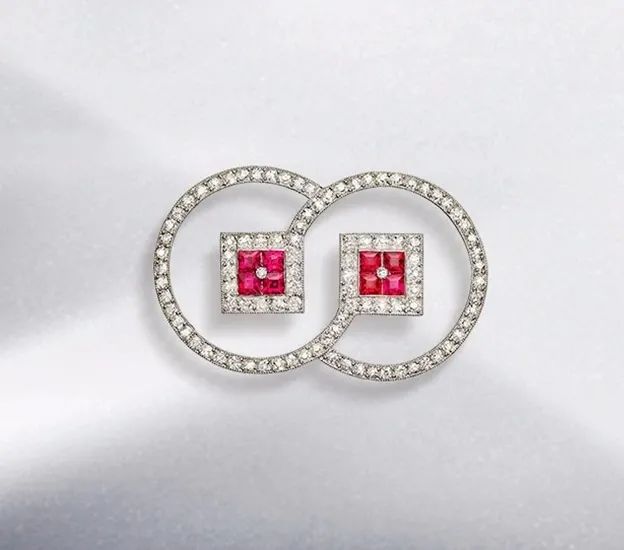
Symmetry/Asymmetry
Onyx, bright lacquer, and enamel: from materials to colors, black is omnipresent at Cartier. Emblematic of the Art Deco period, it has stood the test of time and persisted to this day. Black is a fundamental component of Cartier’s palette: graphic, it outlines shapes, stylizes designs, and creates shadow and perspective effects.
In addition to white or red and green, it adds tension and contrast to combinations, including in the most recent creations.

Movement
Cartier places movement at the heart of its creations. Relying on the precision of composition, designs release power, dynamics, and rhythm. Under the designer’s pencil and the jeweler’s hands, materials are brought to life. This bracelet can transform into a headpiece, movement is everywhere, almost without limits.

Color Contrasts
While black and white are the quintessential Art Deco color combination, Cartier also has other pairings. Combined with the black of onyx or lacquer, the orange of coral inspires sparkling jewelry creations that symbolize this unexpected taste.

Style Appreciation
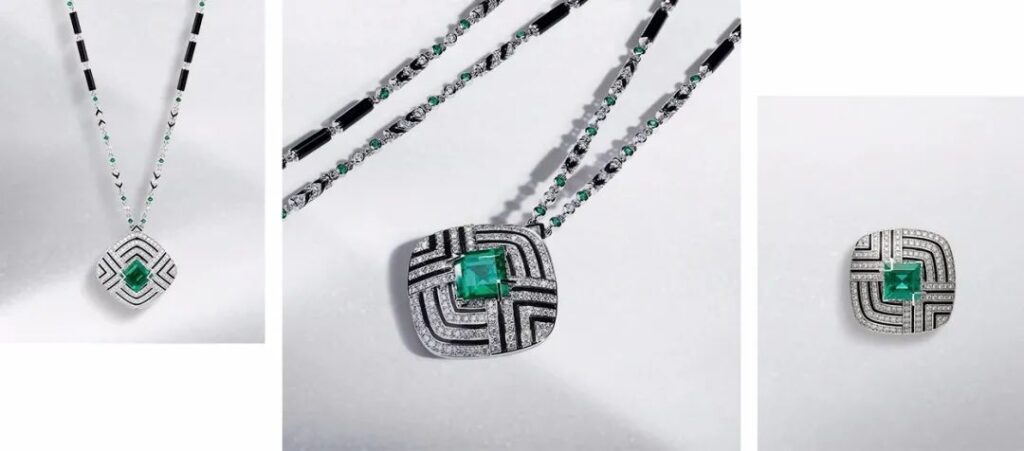
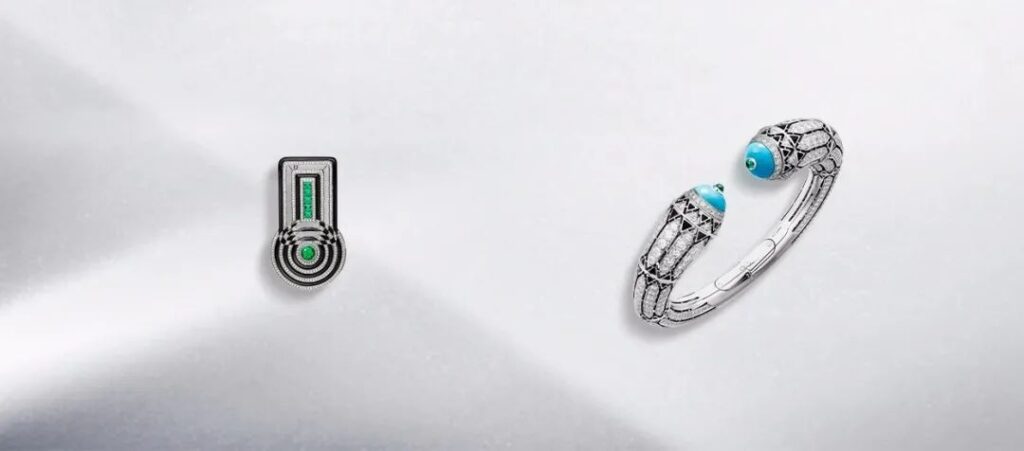
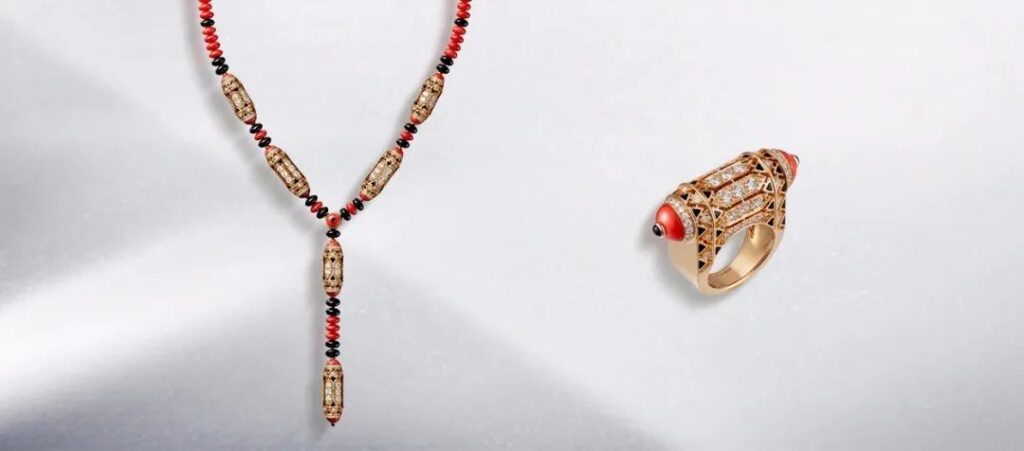
06
FAUNA & FLORA

Half Plant, Half Animal
The Nature of Cartier
Is free, strong, untameable, and beautiful.
True Wildlife
Animals have always found their place in Cartier’s repertoire. Cartier elevates their appearance and nature through their feathers, coats, and scales, as well as their elegance, softness, vitality, and liveliness.

Flowers with Thorns
Cartier’s botanical repertoire stands out for its choice of flowers. Cacti, orchids, edelweiss, and thistles: Cartier chooses them for their uniqueness, without reference or model. They are free. They are incomparable, just as they choose to be. They are fascinated by the freedom of combining materials, the uniqueness of textures, and the movement of nature.

The Art of Gem Carving: Inspired by Life
Cartier is the only great jeweler to integrate master carvers into its workshops. They are responsible for sculpting and engraving precious stones and materials: fossilized wood, amethyst, morganite, and rubellite. These artisans can shape forms from a piece of quartz, a block of jasper, or agate.
The art of carving, identified by UNESCO as intangible cultural heritage, is a rare expertise that needs protection. Cartier perpetuates this tradition by passing on the expertise to young apprentices.


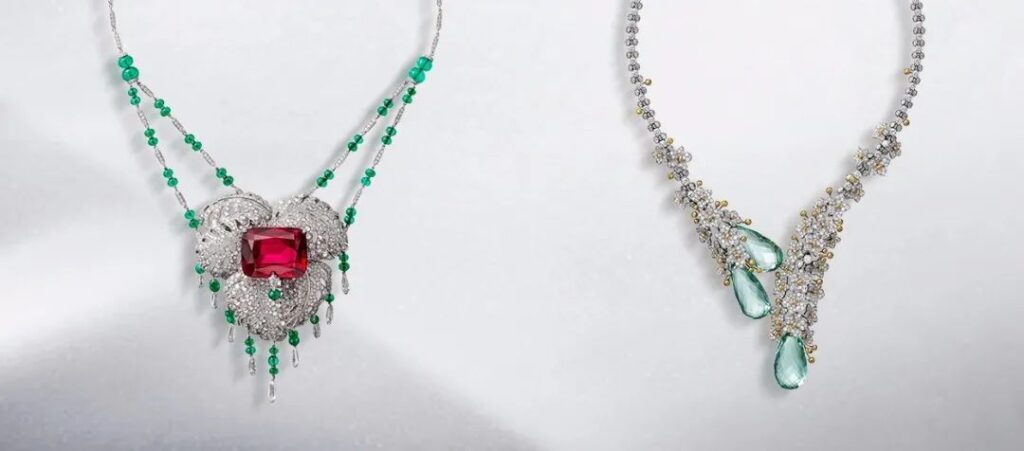
07
COLORATURA

Coloratura
The 240 exquisite pieces of the Coloratura High Jewelry collection master color, movement, and craftsmanship. Through dynamic pairings, vibrant tones, and intertwining inspirations, they awaken new challenges via an intimate dialogue between gemstones, their colors, and the four corners of the earth.

Gemstone Colors
Enter where the sky meets the horizon, where colors collide. From the bold contrasts of Asia, the subtle palette of Japan, the vivid hues of India, and the dynamic tones of Africa: Cartier’s stunning color prism evolves/multiplies with each High Jewelry collection.

Style
With Coloratura, Cartier releases a radiance of infinite movement and creation. Driven by universal curiosity, Cartier’s master jewelers continuously explore bold new techniques, propelled by a curiosity for beauty.

After reading this article, one wonders what thoughts readers might have. The editor has chosen to “lie flat” (a Chinese expression meaning to give up or accept one’s fate).
Unveiling Cartier’s Hidden Treasures: A Deep Dive into the Maison’s Most Exquisite High Jewelry Collections
Tweet
